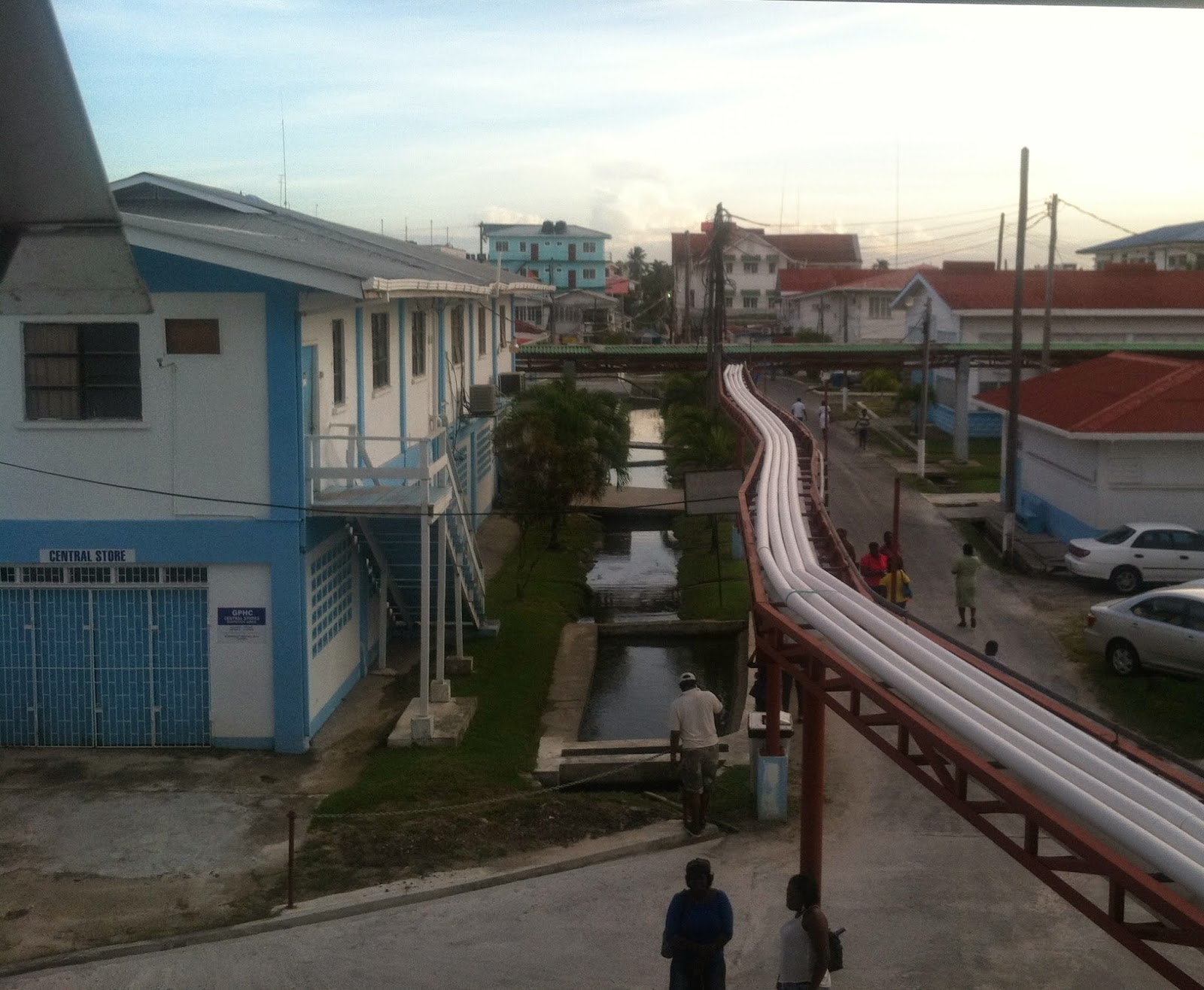Today we took our "show" on the road to Linden at the Charles Roza School of Nursing. We provided the same type of education to 11 tutors (and one CNO) about teaching strategies, designing an instructional guide, and clinical teaching. The difference between this teaching and Georgetown was the level of enthusiasm we received. Many of the tutors were prepared for teaching by taking courses in their BScN degree, and the dean, Mr. Christopher runs a tight ship. The school was very well organized, clean, and the students were very respectful. Just as all nurses are tested once in awhile on their ability to keep calm and keep going on in the face of crazy, Mina's skills were tested as we dealt with 2 major blackouts (these happen quite often in the interior) where she had to adapt to having no lights, no air-conditioning, and no computer/projector. We did have one problem child (a continuously beeping surge protector), but like all problem children we made it sit out in the hall until it could behave :-)
Charles Roza School of Nursing
A drawing hanging in the library showing the work of a midwife
My favorite- old textbooks! These are all texts about Neonatal/Infant care dating back to the 1950's, which is when NICUs were just gaining popularity in the states!
We learned a lot more about clinical instruction during this session. We discovered that clinical hours are not regulated- the semester has a goal of x amount of hours between all the courses, but no set amount it relegated to any course. Because of this, students may be in pediatric theory, but not get to the pediatric unit until after the course is complete, as they rotate students in any order they can. This impacts what we have been discussing all week, which is the need to connect theory to clinical to foster critical thinking/clinical decision making skills. While there are many problems that need to be solved at the level of the Ministry of Health (the schools have no ability to set or uphold their own standards of student behavior, for starters), the issue of there and when students are placed in clinical is a fixable one. We also discussed the total amount of clinical hours. The student may have 300 hours per semester (to give perspective, Capital U. required 210 hours for our senior students participating in a 1:1 preceptorship- the highest amount of hours in a single semester), but they have a high absentee rate, and the students are not given quality attention or supervision. This leads to a high quantity of hours, but how many of those hours are quality? Again, an issue to be discussed with Ministry/Nursing Council, but an important one if they want to improve their passage rates.
One other major discovery is that the Nursing Council does not share the criteria they use to evaluate students in practical portion of their national licensure exam. So the tutors were saying that while they may teach a skill one way, the evaluator may want it done a different way, and would fail their students not because their technique wasn't correct, but it wasn't the exact way they wanted it done. However, unlike most schools of nursing who give practical exams, the grading rubric is not disseminated, causing issues with passage rates.
It was interesting to get these more in-depth perspectives, which drastically impacts what Mina and I are teaching. We thought passage rates were directly related to teaching strategies and curriculum, and while in many ways it may still be, there are other bigger issues that need addressed such as clinical hours, evaluation criteria, and the ability of the schools to set and uphold their own standards (rather than the ministry micromanaging).
Mina teaching
Mina facilitating the development of an instructional guide with some of the tutors
Philosophy of the School of Nursing
A 2 hour ride brought us back to Georgetown and to the home of Mina's Husband's family (cousins) for yet another amazing dinner of dahl with potato roti, okra, bora beans, and spinach. They are quickly becoming my new Guyanese family, and I hope to get a cooking lesson during my next visit!
Another cousin drove us home with a tour of Georgetown first. I discovered that Stabroek market has a very lively night market selling great produce and some cheap authentic dishes, such as cook up. For future reference, there is also a great sports bar upstairs and a good restaurant at the corner. Our drive also led to Kitty so that Mina could reminisce about her childhood then to two bars in the area (very close to project dawn)- G spot which had a great breezy patio and a laid back atmosphere and Steep's on station street which was a little younger and louder but with a great energy (just try to get a table outside!). It's always great to get the local perspective- as I said tonight, I like to go places where there are no white people :-)
Early pickup tomorrow (7am!) so off to bed while listening to the driving rain...
Gate outside the School of Nursing
On the drive out of Linden- Bauxite mines





















































